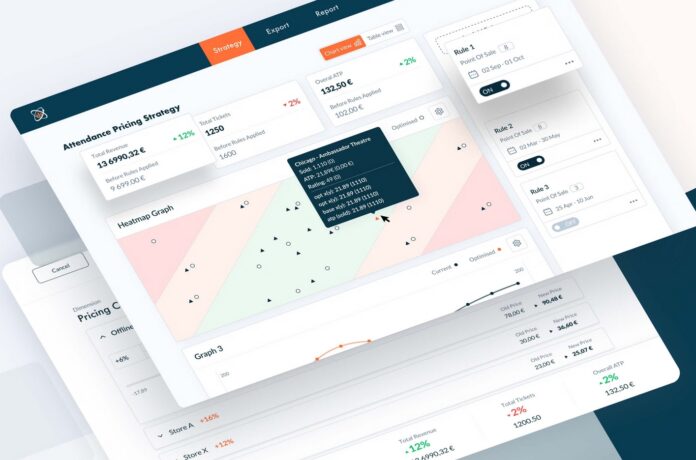Users today have higher expectations than ever before. Therefore, businesses need to offer a straightforward and user-friendly experience to draw in and keep clients. SaaS UI/UX design is helpful in this situation.
Any business hoping to create a successful SaaS product with a well-designed user interface and user experience must have a strong understanding of SaaS UI/UX design.
We go over the significance of hiring qualified SaaS designers and developers for the success of your product in this short tutorial.
What Exactly Is SaaS UX Design?
SaaS UX design refers to the ideas and techniques of user experience design explicitly applied to SaaS applications. User experience design is concerned with generating a pleasant and natural connection between users and software products, and it meets the particular problems and requirements of cloud-based software UX in the context of SaaS.

Why is SaaS UX Design Important?
SaaS UX design aims to provide an engaging, efficient, and user-centric experience for individuals or teams dealing with UX for cloud computing software. In a subscription-based software UX, design considerations consider the dynamic nature of these services and the changing demands of customers.
High conversions
The process of acquiring new users for a SaaS product is called user acquisition. User retention is the technique of preventing consumers from departing the product and switching to a competitor. Convincing consumers to pay for recurring subscriptions is called user conversion.
Retention
Retaining current customers allows organizations to increase revenue while decreasing user acquisition expenses. According to a recent survey, frequent customers of SaaS applications are 67% more inclined to spend money on further in-app purchases. They are also more likely to make references.
Better user engagement
When users have a pleasant interaction with a SaaS product, they are more likely to continue using it. Effective UX design may increase user engagement rates for SaaS programs, though the term may signify different things for various SaS products.
Good UX design increases user engagement, establishing loyal user bases for SaaS firms.
User adoption
Efficient UX design in SaaS solutions enables users to perform particular activities and get desired results. This is particularly true for business SaaS applications. Users will be discouraged from using business-centric SaaS software if poorly designed.
They will do so sparingly if they are obliged to use SaaS software. SaaS programs with user-friendly interfaces, on the other hand, are more enjoyable to use. Enterprise software UX solutions do not obstruct users’ ability to complete their duties.
Effective collaboration
Collaboration among users or teams is standard in SaaS systems. A user-friendly interface facilitates communication and cooperation, increasing the application’s value.
Scalability and adaptability
A scalable and flexible UX design guarantees that the interface will remain user-friendly as SaaS services expand and add new features. This allows for user growth and changing demands over time.

SaaS UX best practices
The SaaS ecosystem is exceedingly competitive and expensive. A corporation may spend between $10,000 and $500,000 to design, install, and maintain SaaS software. Every detail counts in such a competitive atmosphere, and no organization should disregard SaaS UX design.
Here are some essential SaaS UX case studies.
1. Identify core user needs
You should begin by determining fundamental user demands and designing the navigation around them. Any user-oriented design concentrates on being useful rather than merely being a visual pleasure. Essential aspects such as your target audience’s goals, your existing content, and, most importantly, the sector in which your SaaS falls are essential to the design if you want to effectively engage your visitors and bring them to the intended conclusion.
2. Make it easy to find what users need
Users should always be able to find what they need right away. They should not have to search for a specific element or page. A simple and intuitive navigation system should allow customers to navigate a product without pausing to consider the necessary efforts.
Give clients adequate information and visual cues to help them execute their activities efficiently. First and foremost, create a clear navigation hierarchy so that users know where they are at all times.
3. Make simple and consistent UI
Consistency and clear information architecture are critical when visiting a website or app. Maintain consistency in the navigation elements and language throughout the site or app. If visitors want more profound access to features and pages, ensure that the major and secondary navigation are regularly linked via subpages and that connections are immediately discernible from plain headers.

To Sum Up
Given that poor navigation is only one step away from a fully useless product, a critical conclusion is that a clear and intuitive navigation system is required, with a clear interface and navigation that suits the product the best.
Suppose you want to improve the user experience of your SaaS and ensure that your customers return. In that case, you have to make your product’s navigation simple and easy for your customers to discover what they need.









